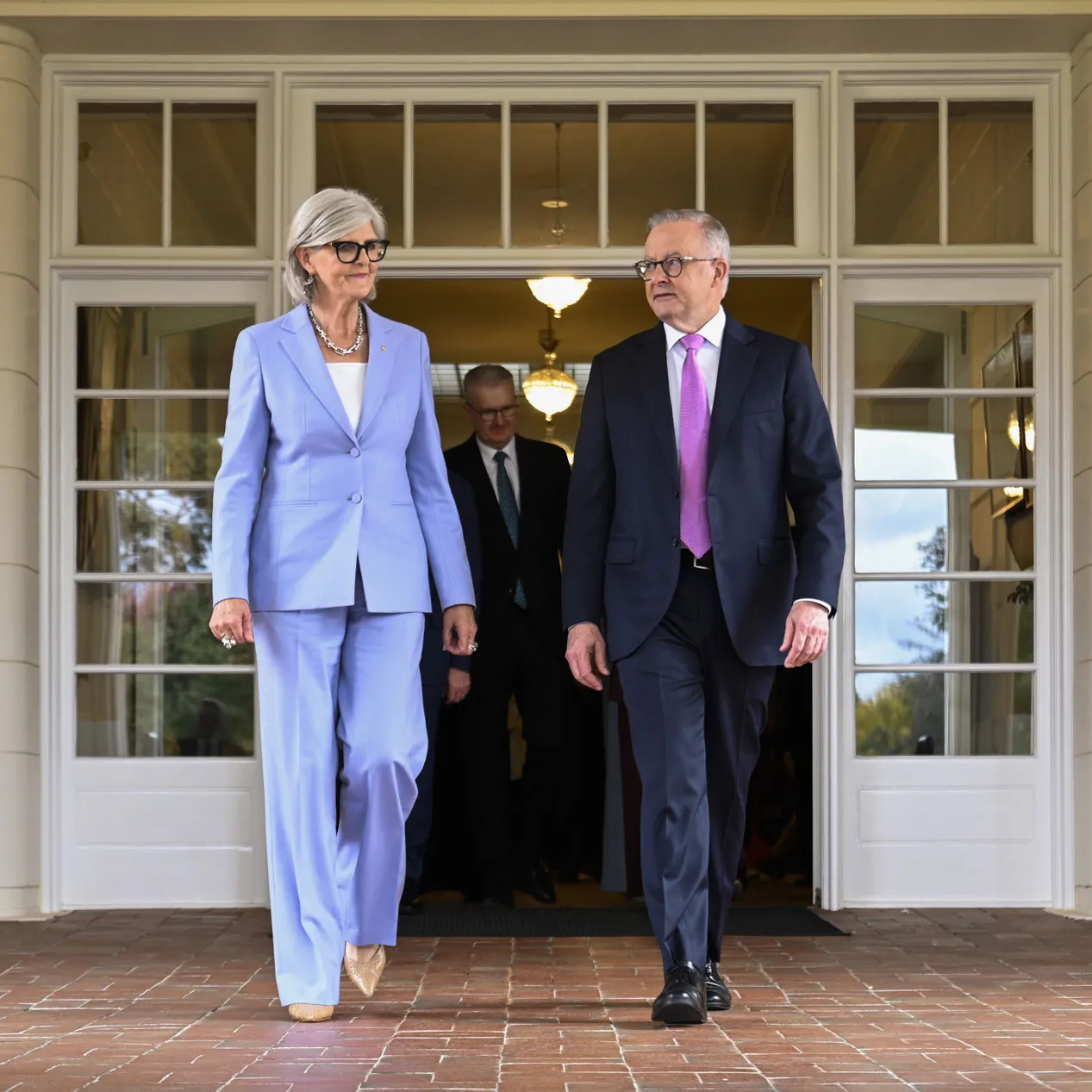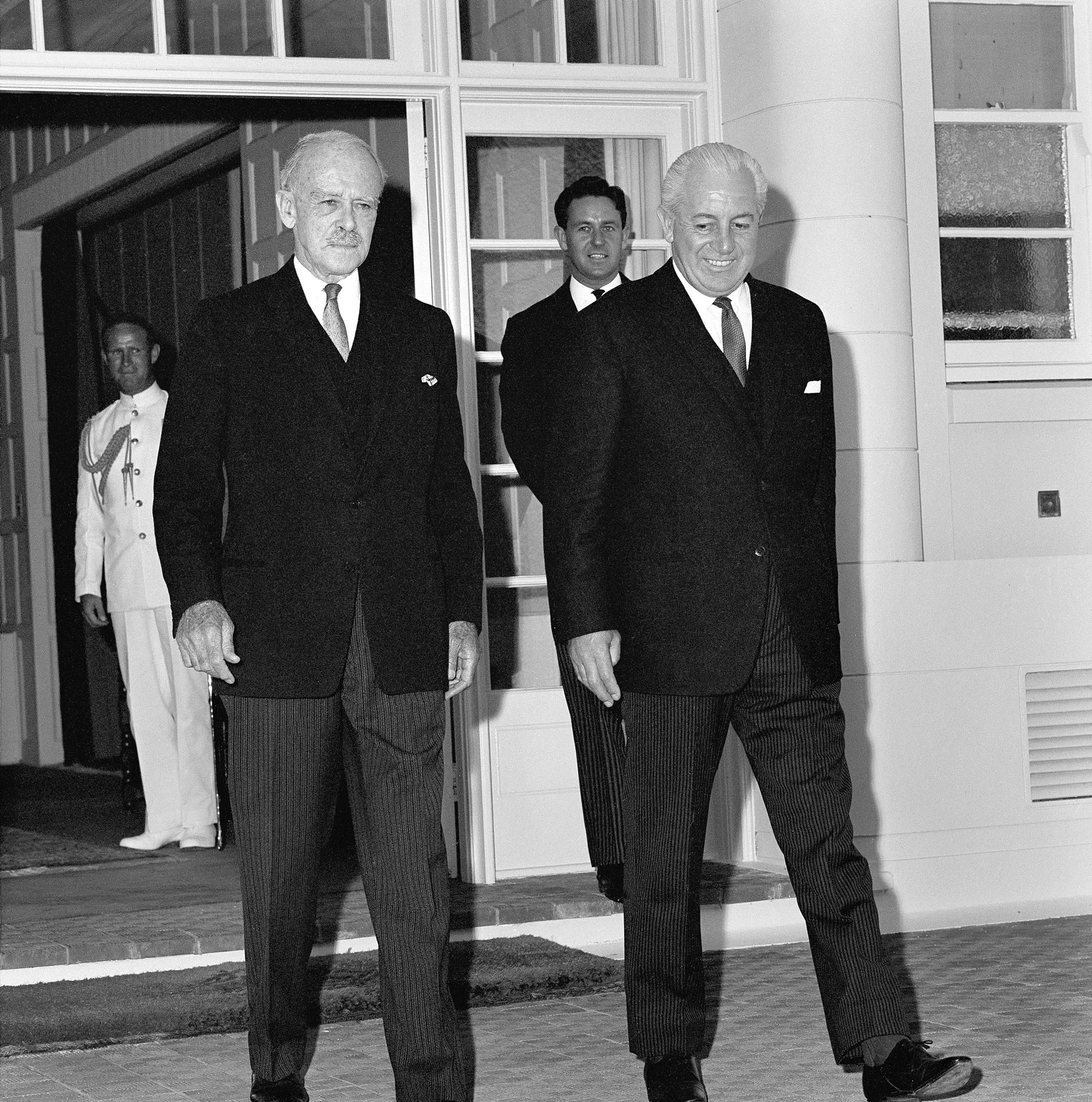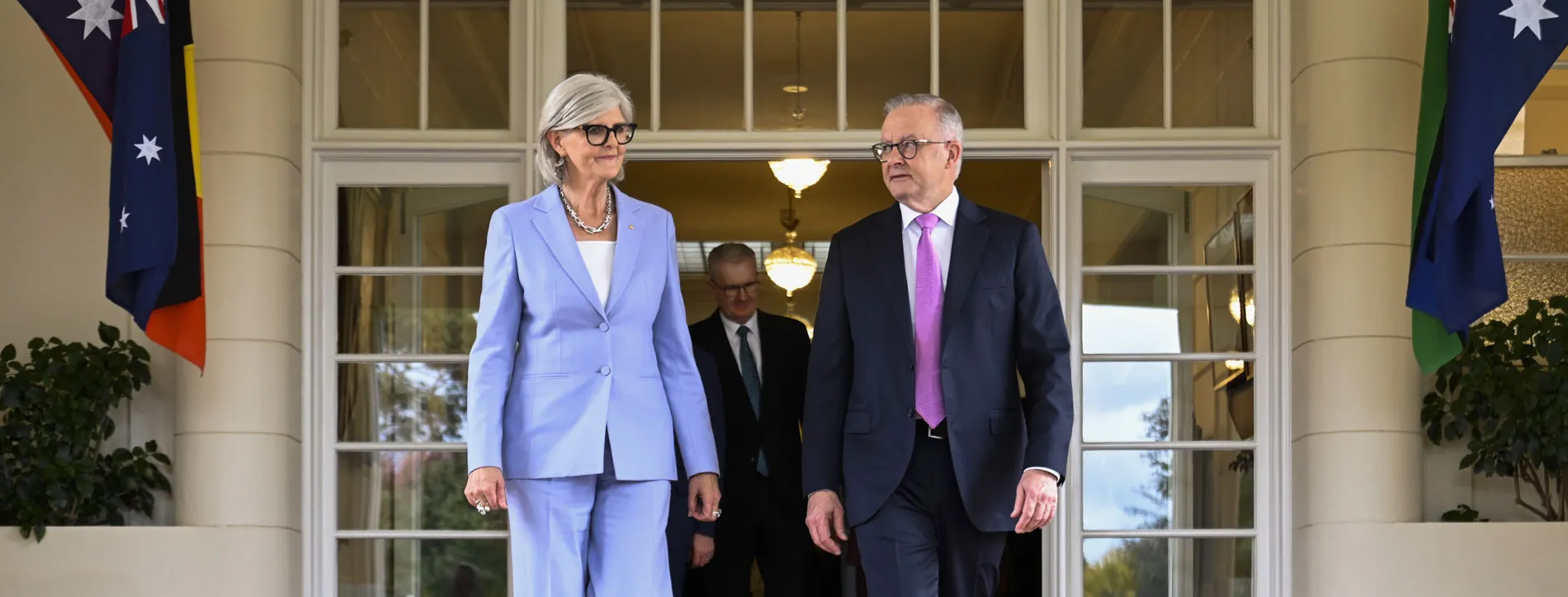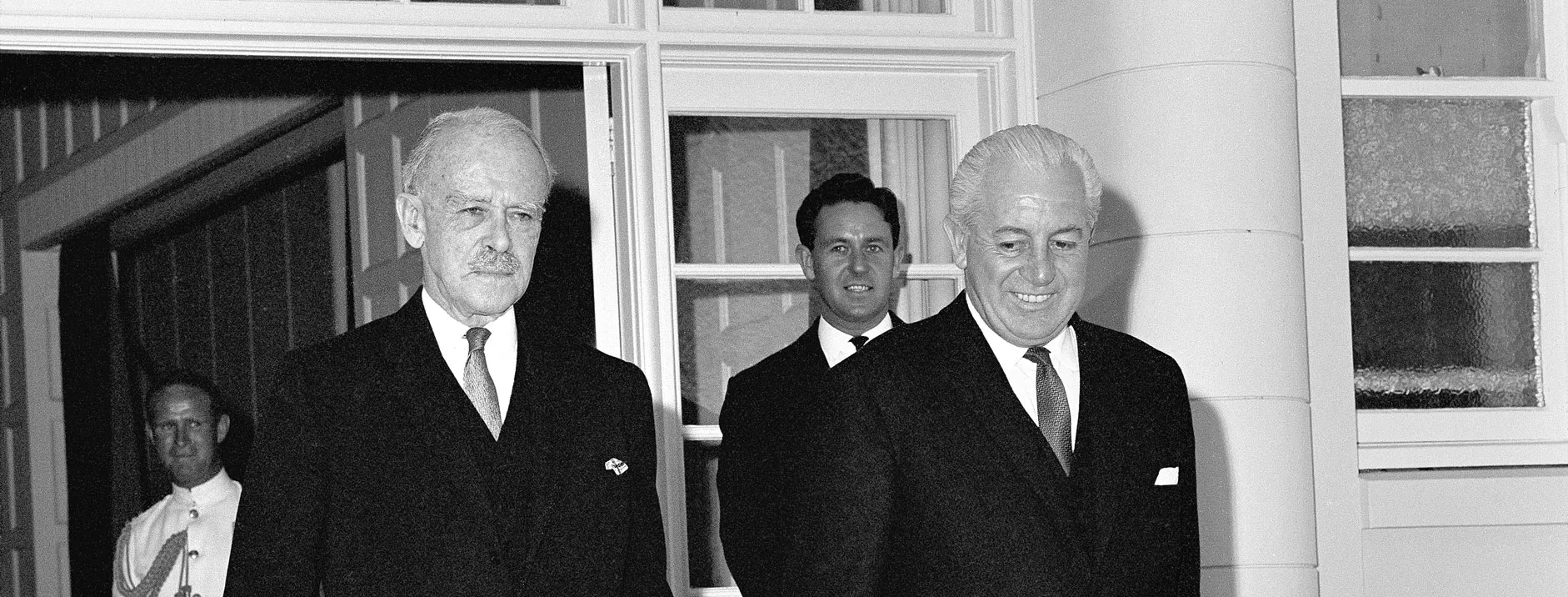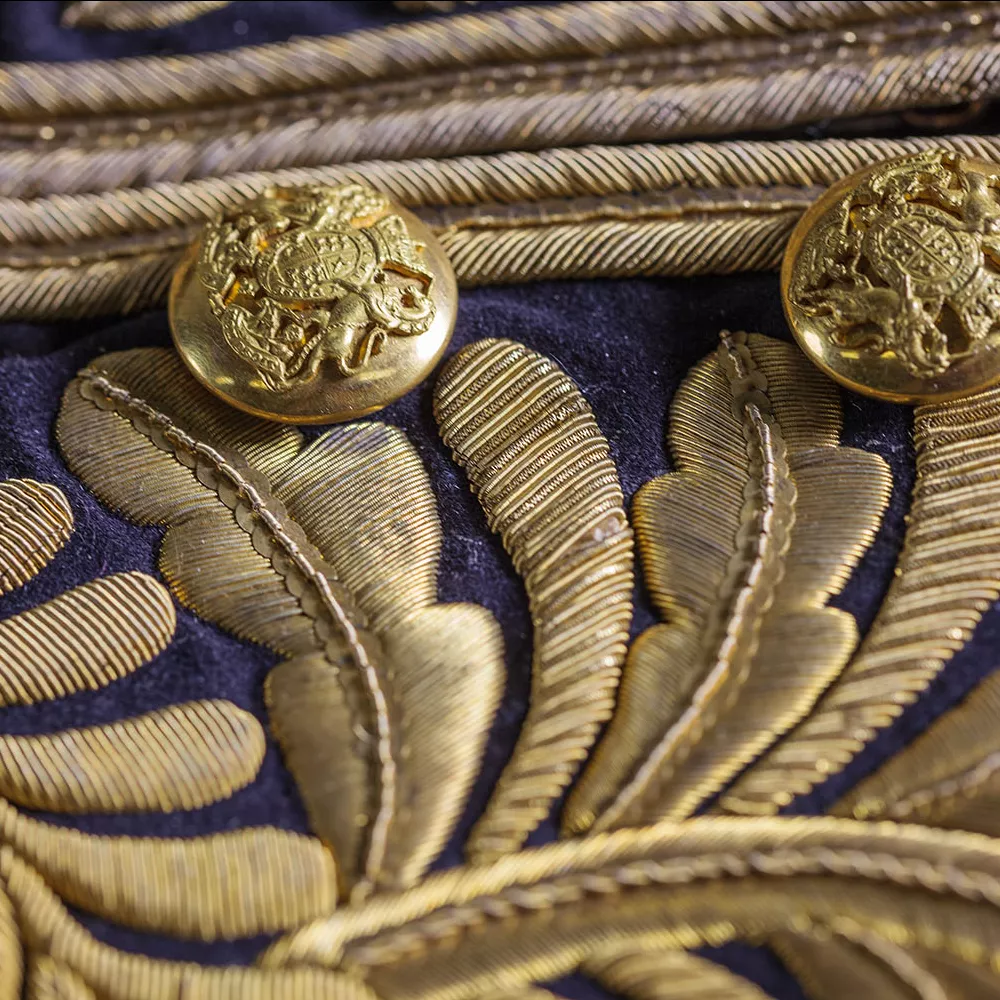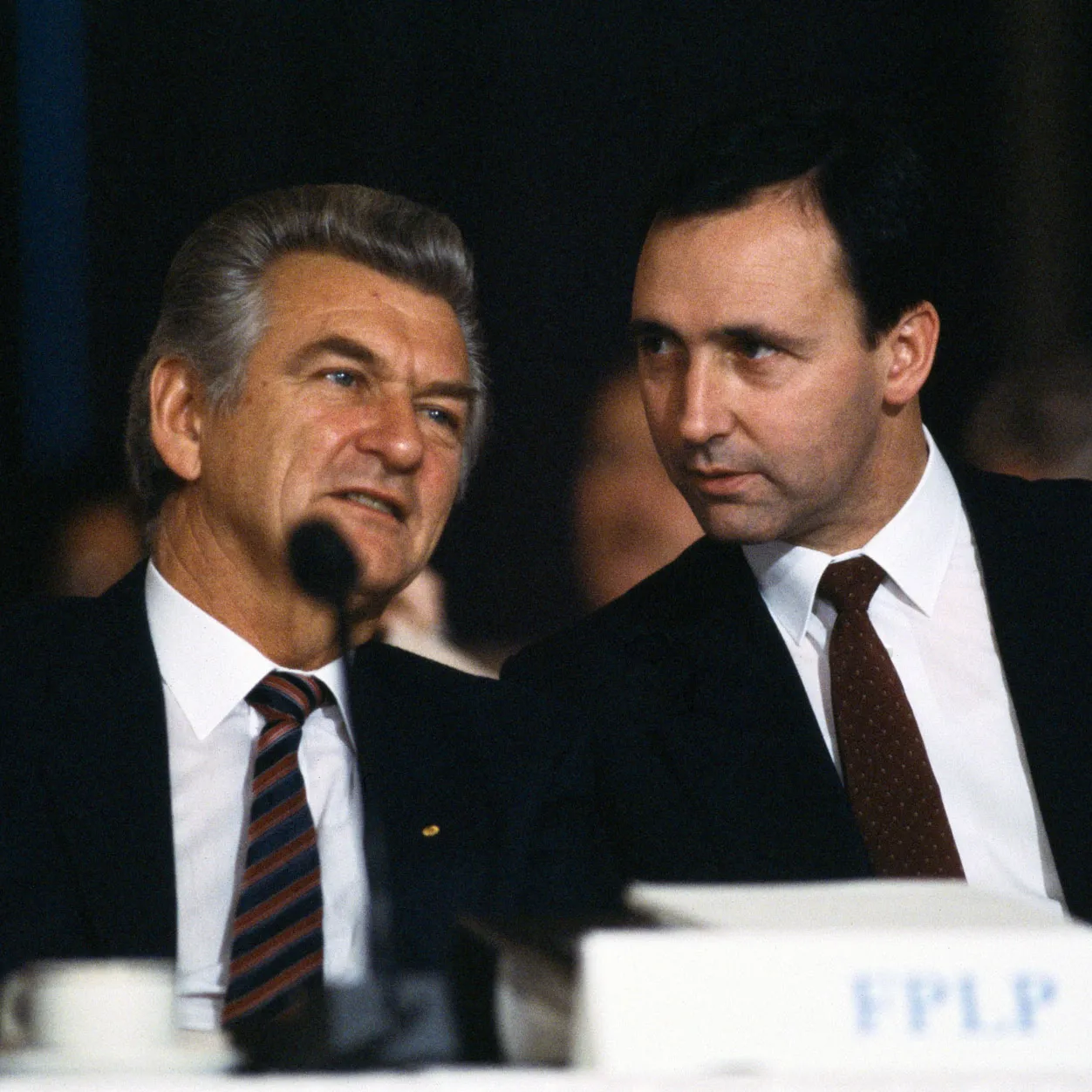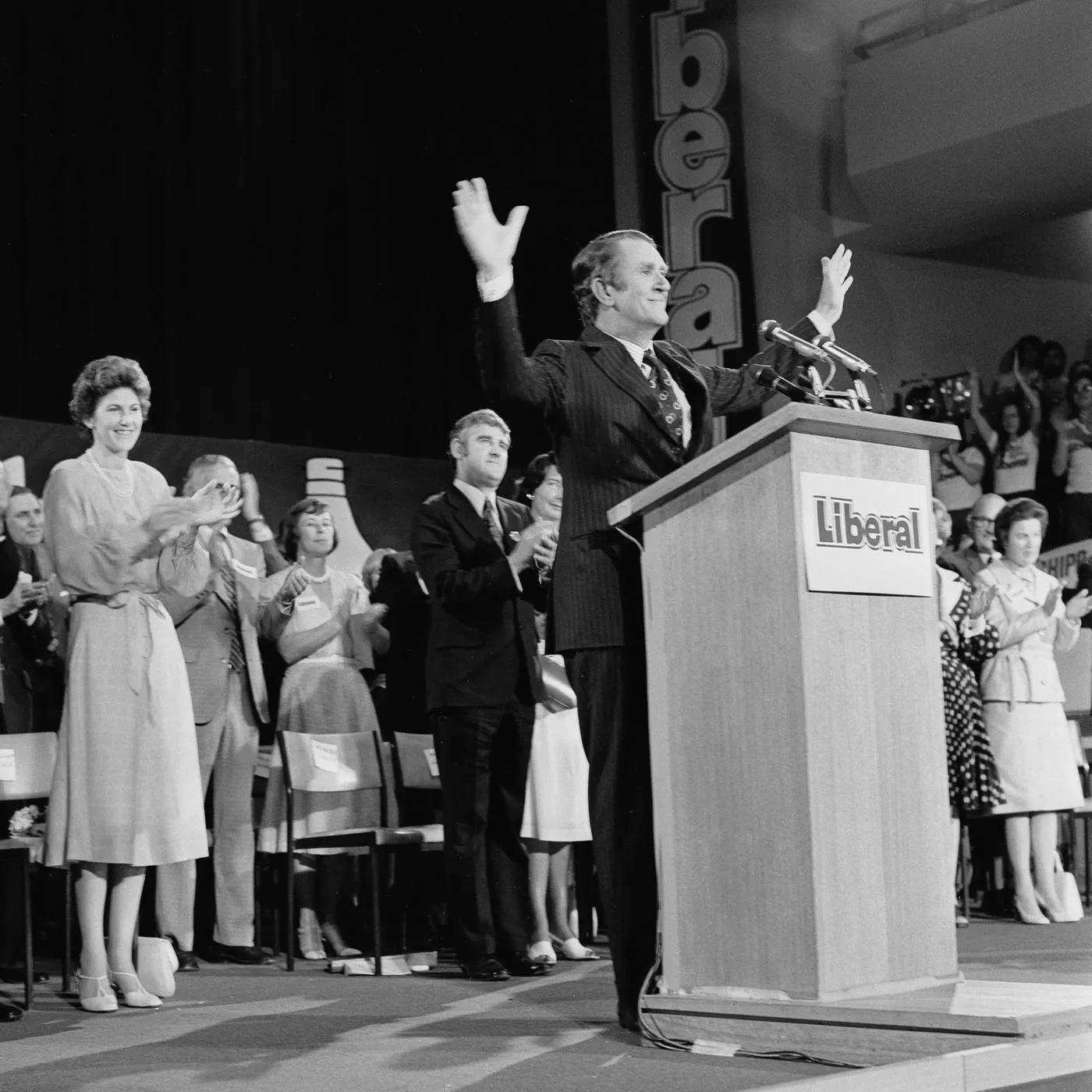What is the role of Australia's governor-general?
The powers and duties of the governor-general explained.
What is the role of the governor-general?
Australia is a constitutional monarchy. The monarch is our head of state but must follow the Australian Constitution. The governor-general is the monarch's representative in Australia. In practice, they fulfil the functions of Australia's head of state but typically follow the advice of the prime minister. Their role includes ceremonial, constitutional and civic duties, as well as being the commander-in-chief of the Australian Defence Force.
How is the governor-general appointed?
The governor-general is appointed by the monarch on the recommendation of the Australian prime minister.
In the early days, the role was held by British peers and involved much pageantry and ceremony. Nowadays, the role tends to be held by Australian people from backgrounds such as law, the military, politics, business and academia.
How long is the governor-general appointed for?
There is no fixed term for a governor-general, but generally they are given a five-year term in office. Historic exceptions to this include Sir Alexander Gore Arkwright Hore-Ruthven, First Earl of Gowrie, who served for nine years from 1936 to 1945, and William Shepherd Morrison, First Viscount Dunrossil, who was sworn into office on 2 February 1960 and served just one year and one day in office, passing away suddenly on 3 February 1961 at Government House.
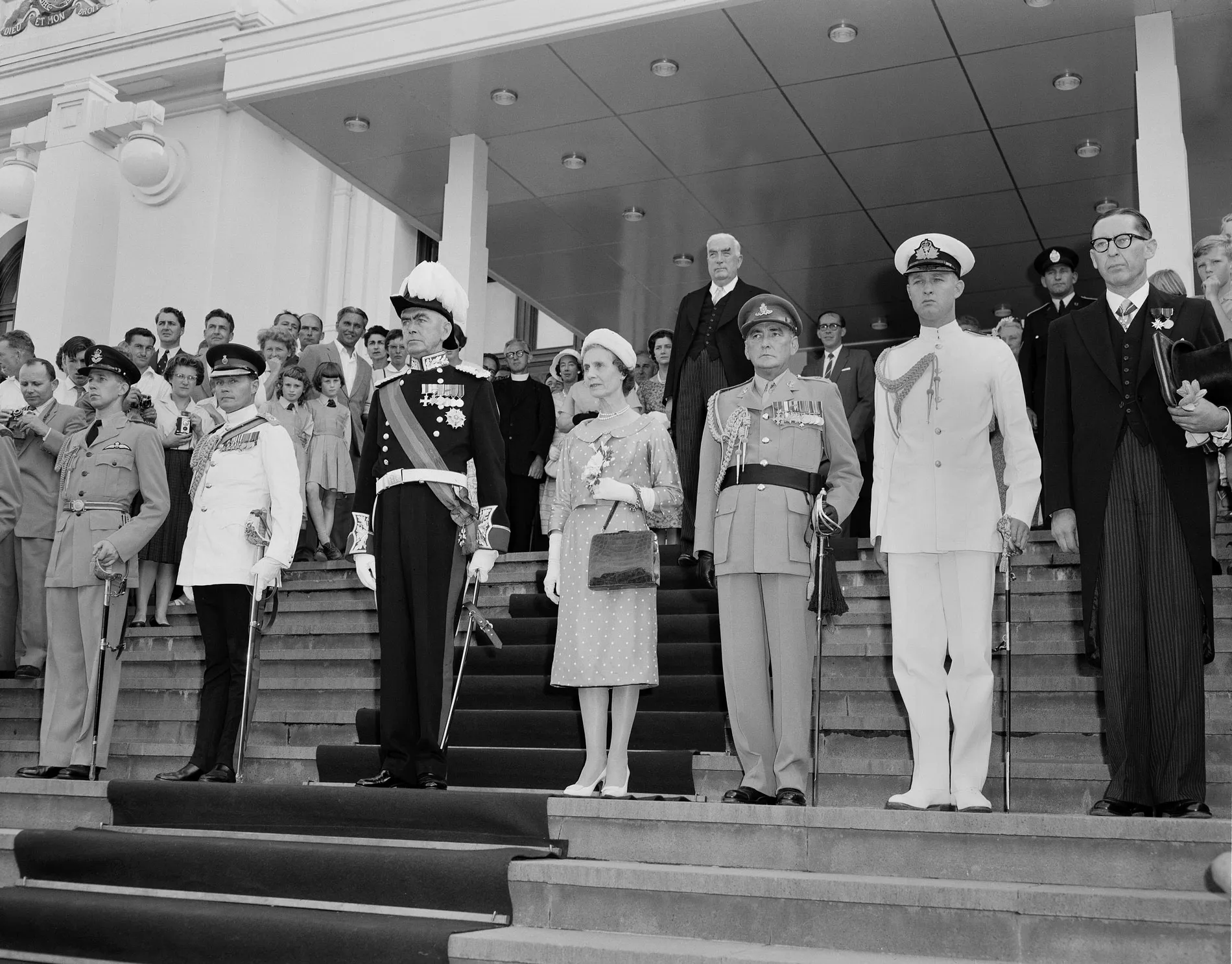
Viscount and Viscountess Dunrossil on the steps of Parliament House after being sworn into office by the Chief Justice of the High Court of Australia, Sir Owen Dixon, 1960. Left to right: Flight Lieutenant Gordon, Lieutenant Colonel Gordon, Viscount and Viscountess Dunrossil, Lieutenant Colonel Rodriguez, Lieutenant Taylor and Murray Tyrrell. Sir Robert Menzies stands behind the front row, further up the steps.
Photograph W Pedersen, NAA: A1200, L34123
What are the duties and powers of the governor-general?
Constitutional duties and powers
The Constitution delegates certain powers to the governor-general to act on behalf of the monarch. These include the power to:
- Formally approve legislation passed by the Senate and House of Representatives, known as Royal Assent (as yet, no governor-general has refused to give Royal Assent to legislation)
- Block or propose amendments to legislation passed by the Senate and House of Representatives
- Issue writs to start the process for federal elections
- Decide when parliament meets
- Call a joint sitting of parliament
- Act as the commander-in-chief of the Australian Defence Force
The governor-general also has 'reserve powers', which are not laid out in the Constitution, but instead are guided by convention and tradition. These reserve powers are generally agreed to include the right to: appoint a prime minister in the case of an unclear election outcome; dismiss a prime minister if they don't have a majority in the House of Representatives; dismiss a prime minister or minister if they break the law; refuse a request from a prime minister to call an election; refuse a request for a double dissolution.
The use of reserve powers is rare. The dismissal of Prime Minister Gough Whitlam and his government on 11 November 1975 by Governor-General Sir John Kerr was the first and only time a governor-general has used their reserve powers to dismiss an Australian prime minister and their government.

Ceremonial duties and responsibilities
The ceremonial responsibilities of the governor-general include:
- Attending the opening of a new parliament after an election
- Administering the oath of office to the prime minister, ministers, judges and other officials
- Hosting and meeting heads of state and diplomats
- Attending national events such as Anzac Day ceremonies
- Awarding honours to Australians in recognition of outstanding service and contribution
For instance, Australia's fifth governor-general, Thomas Denman, 3rd Baron Denman, who held the office from 1911 to 1914, had the significant job of travelling to Canberra in March 1913 to lay the foundation stone for the new capital city. His wife, Lady Gertrude 'Trudie' Denman, accompanied him and was tasked with announcing the name of the new capital of Australia, Canberra.

Governor-General Lord Denman, his wife Lady Denman, Prime Minister Andrew Fisher (centre) and King O'Malley (right) at the stone-laying commemorative column in Canberra, 12 March 1913. Photograph NAA: A1200, L13357
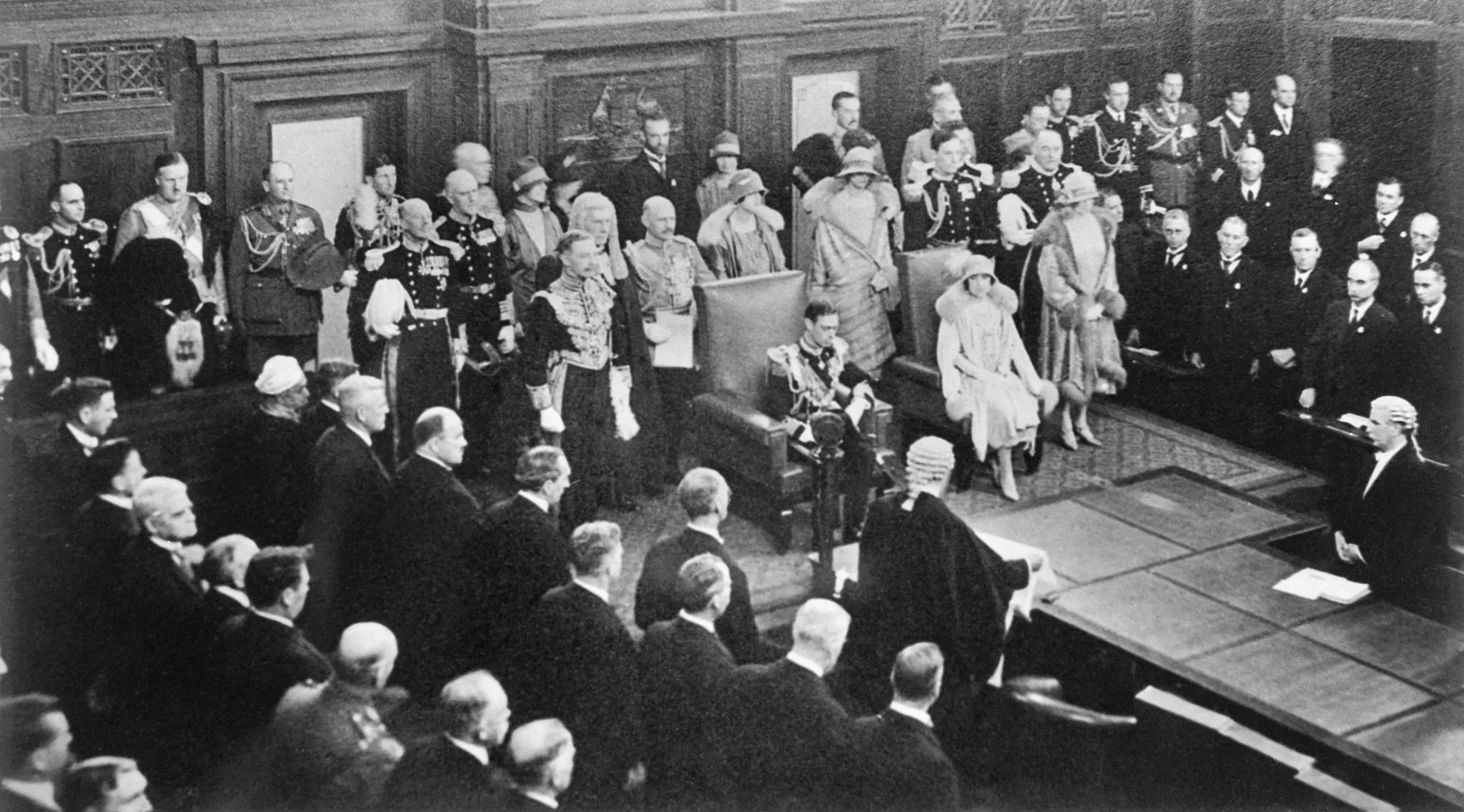
On 9 May 1927, Parliament House was opened by the Duke of York, later King George VI. Governor-General Lord Stonehaven was in attendance standing next to the Duke and Duchess of York in the Senate Chamber during the official opening. Stonehaven had the additional duty of hosting the Duke and Duchess of York at Government House in Yarralumla. Photograph NAA: A1200, L76961
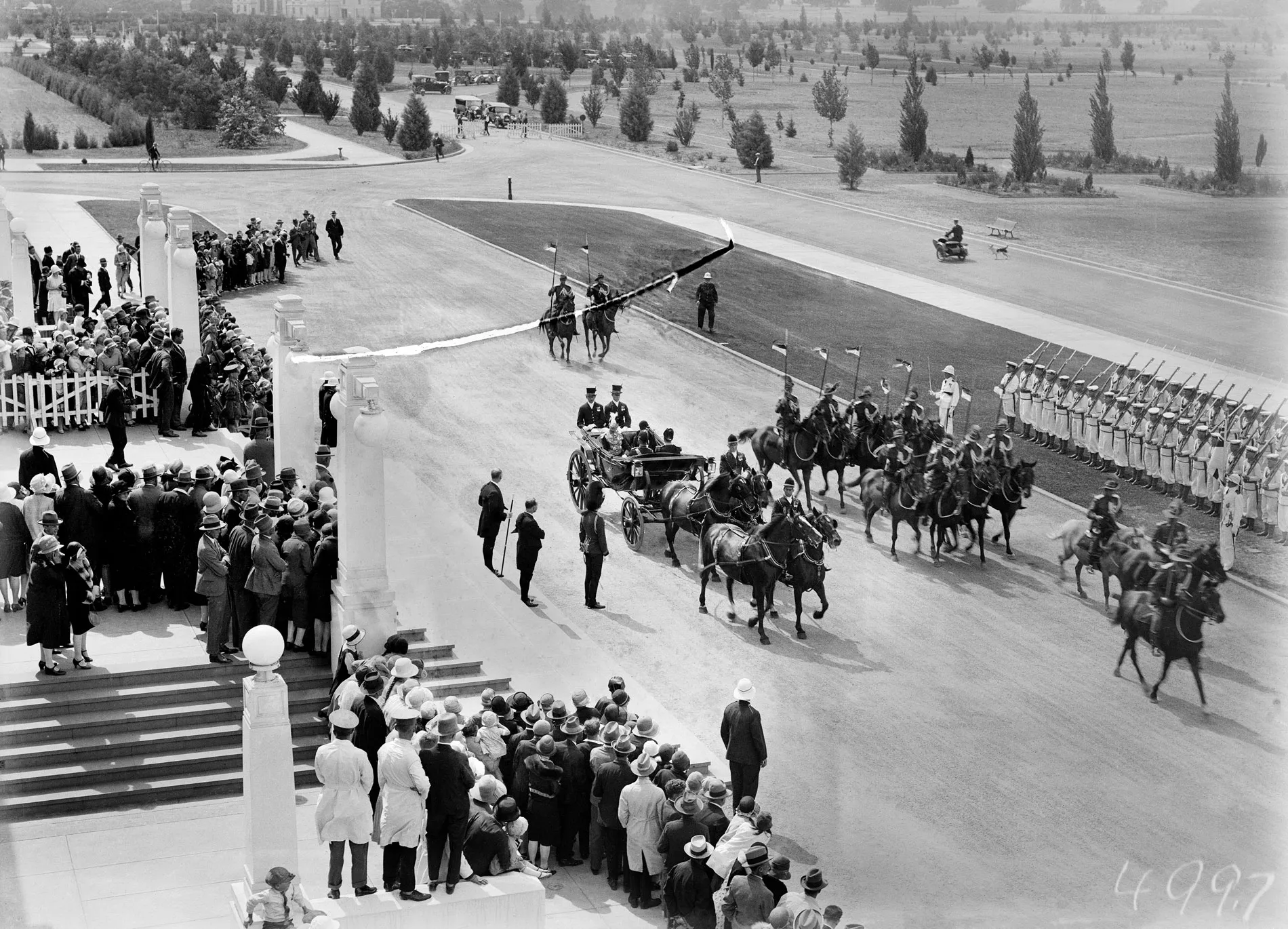
Governor-General Lord Stonehaven arriving at Parliament House in 'state landau' with the escort of Light Horse for the opening of the 16th Parliament, 1929. Photograph NAA: A3560, 4997
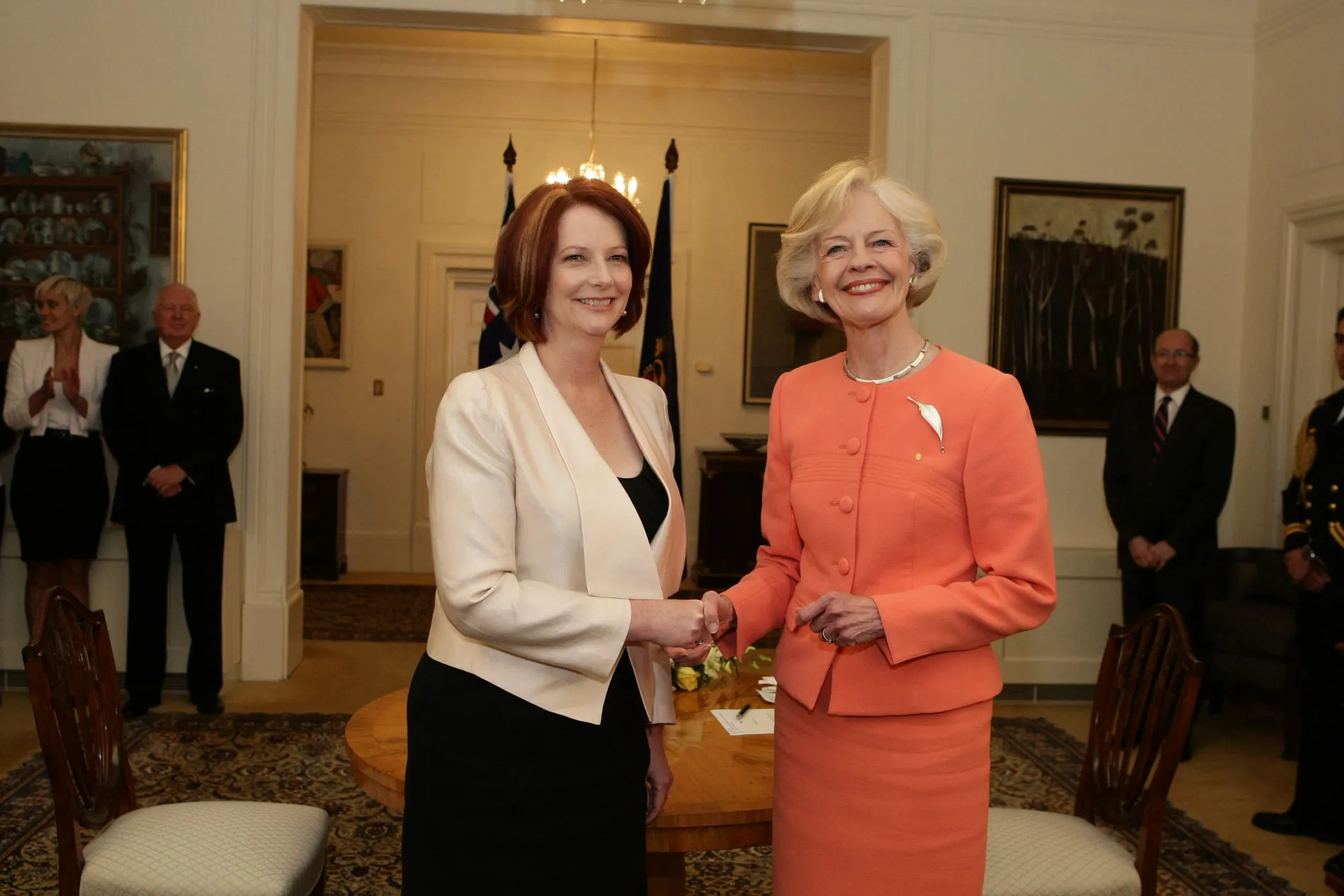
Governor-General Dame Quentin Bryce swearing in Julia Gillard as the prime minister at Government House, Canberra, 14 September 2010. Photograph by Kim Smith / Newspix
Civic duties and responsibilities
Community engagement is a key part of the governor-general's role. They are expected to represent Australia both nationally and internationally. Ways the governor-general engages with the community include: travelling to meet people and groups who contribute to society; responding with messages of support on behalf of Australians to natural disasters; opening and attending national and international ceremonies and events; serving as patron to organisations, including cultural, sporting, mental health and more; and sending congratulatory messages to Australians for special milestones.
The Constitutional delegation of powers to the governor-general explained
These powers are allocated to the governor-general-in-council. This refers to the Federal Executive Council, a body made up of government ministers that are the official advisers to the governor-general. Because most of the powers are assigned to the governor-general-in-council, the governor-general is not usually empowered to act on his or her own, and instead is bound to accept the advice of the government of the day.

